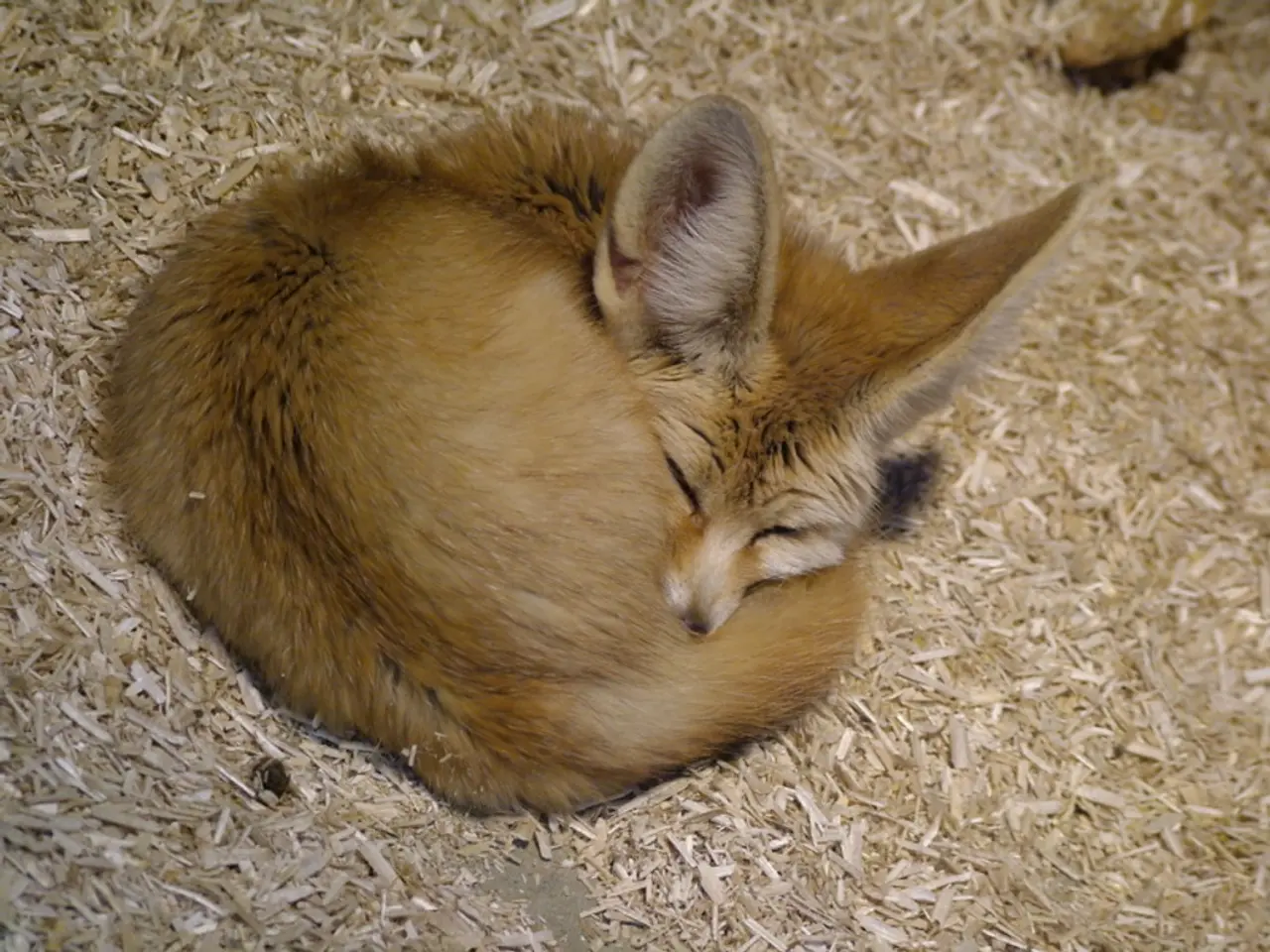"London's foxes flock towards the scent of a McDonald's Happy Meal, drawing a crowd"
Urban Foxes Thrive in London's Cityscape
London's cityscape is home to an estimated 10,000 red foxes, a population that has been steadily increasing in recent years. These adaptable creatures have become relatively common urban residents, often living in close proximity to humans and adapting to the city life.
Foxes in London are generally not aggressive and are considered "quiet neighbours" by many city dwellers. Some residents even form close relationships with these furry creatures, recognising them as individuals. However, their close proximity to humans has led to occasional nuisances, such as raiding bins, gardens, and poultry enclosures.
The red fox's adaptability is a key factor in its thriving presence in London and other cities worldwide. They have learned to feed on rodents, birds, and even discarded human food, making the most of the city's food sources. This adaptability has allowed them to capitalise on the urban environment and maintain their large population.
The presence of foxes in London can be traced back to the aftermath of the Second World War, and their numbers have been on the rise ever since. Urban sprawl may have played a role in their migration into town, as areas like Camberwell became more urbanized over time.
Researchers like Tom Fry, a research associate at the University of Cambridge, have dedicated their academic careers to studying the interactions between humans and foxes. Dr Fry is currently conducting participatory research in urban environments, asking residents about their experiences with foxes.
Urban fox family groups can have as many as eight or ten members, with specific roles. Foxes in urban environments are known to dig up food waste, such as remnants of KFC meals, and bury them under floodlights. In some cases, residents may feed foxes, providing short-term benefits. However, this can lead to concerns about the animals' reliance on human food sources.
Despite their ability to thrive in urban environments, foxes have a short life expectancy, with most not making it past three years old and 60% dying in traffic accidents. Urban foxes are also known to be illegally poisoned as a consequence of negative human-fox interactions.
Despite these challenges, the urban fox is evolving to better adapt to city life. Their skulls are becoming more concave to accommodate the need for a bigger jaw muscle, and they are developing larger muscles on their faces to break down bones and scraps. In fact, some experts believe that urban foxes could potentially outlast humans, as they would have food sources like grey squirrels and fruit trees.
Recently, a mural featuring a fox appeared in Camberwell, London, adding to the city's growing appreciation for these adaptable creatures. A study in 2013 found that fox densities had doubled since the 1980s in British cities, indicating that the urban fox population will likely continue to thrive in London and beyond.
"Urban foxes have not only adapted to city life but also impact the home-and-garden landscape, with occasional forays into gardens for food waste or poultry enclosures. Some city dwellers, intrigued by these furry neighbors, even observe their lifestyle,recognizing individuals in their colony."
"In the realm of urban landscape art, a mural of a fox was unveiled in Camberwell, reflecting Londoners' growing appreciation for these increasingly common and adaptable urban creatures."




